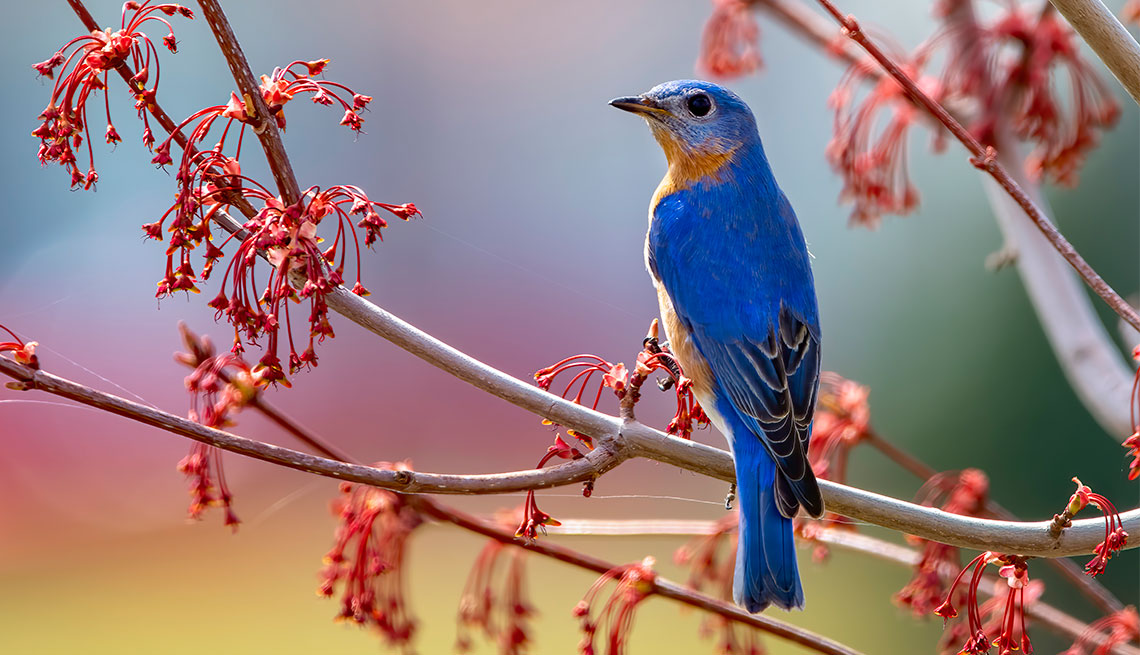
A beginner’s guide to birding
- Select a language for the TTS:
- UK English Female
- UK English Male
- US English Female
- US English Male
- Australian Female
- Australian Male
- Language selected: (auto detect) - EN
Play all audios:

HOW TO GET STARTED BIRDING Here’s how to take the first steps toward becoming an ornithophile. START LOCAL. Begin by identifying birds in your backyard or local park — wherever you
happen to go pretty often, says Laurent. “Start recognizing and learning those birds and gradually you’ll start expanding.” CONSIDER BUYING BINOCULARS. The technology has improved to the
point that you can get a good pair of binoculars for $100 to $150, Curtis says. And Bryant suggests you can get a starter pair for as low as $20. The Cornell Lab has ratings and resources
for choosing binoculars on its website, All About Birds. If you’re not ready to invest, check to see if your local birding club, nature organization or public library has binoculars you can
borrow. GRAB A BOOK. Laurent describes himself as “old school” — he likes using an actual bird book rather than a phone app that depends on Wi-Fi or cell service. Books vary in style and
organization, so read a few at the library or bookstore to see what suits you, he says. Some have photos, but he prefers a guide with drawings or paintings that show more details of field
markings — each bird’s distinctive colors or patterns based on species, gender and age. USE BIRDWATCHING TECHNOLOGY. There are several birding apps, such as the National Audubon Society’s
free one, that allow you to share photos with other birders. But the big go-to is the free Merlin Bird ID app, developed by the Cornell Lab. Merlin includes every bird species in the world,
Curtis says, but offers suggestions based on geography and season, and walks birders through the identification process using size, shape and color. It also has a new feature that can
identify birdsong. Merlin relies on eBird, Cornell’s database that’s supported by bird reports submitted by birders all over the world. TAKE A BIRDING CLASS. You can find online and
in-person birding classes through a wide variety of places, including nature centers, bird sanctuaries, senior centers, adult education classes, birding clubs, libraries and educational
institutions. Cornell, for example, offers a free birding course on how to be a better birder, and the Portland [Oregon] Audubon Society has a one-hour online class about woodpeckers for
$30. GO ON AN ORGANIZED WALK. Look for a walk that welcomes beginners, advises Bryant, who leads birding walks around Boston as well as birding photography tours in Costa Rica. “When you
have hard-core birders, they’re listening for different things and they’re more focused,” he says. On beginner-friendly walks, guides and fellow walkers aren’t as likely to be bothered by
chatter or questions, he says. CHECK OUT SOCIAL MEDIA. If you can’t get out on a walk, check in with birders and follow them on social media. Look for hashtags like #birding,
#birdsofinstagram and #blackbirdersweek. JOIN A BIRDING CLUB. There are birding clubs all over the country that offer outings, education and camaraderie — and welcome beginners. The
American Birding Association has a list of clubs by state. Nature organizations and your local library are also likely to have contacts. There are birding groups on MeetUp, as well as on
social media sites such as Facebook and Reddit. DON’T STRESS. “Birding comes with time and practice, so don’t feel like you have to get every bird right every time,” says Curtis. “In fact,
the most experienced birders in the world still don’t [identify] every bird, every time. So just give yourself some slack and have fun with it.”
